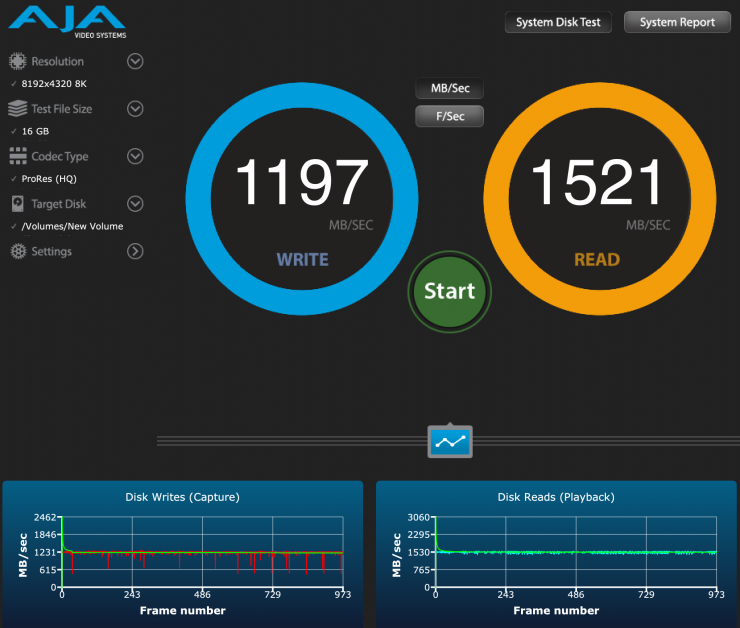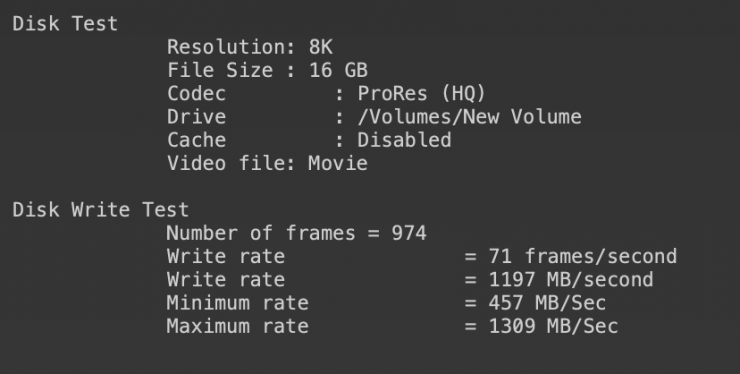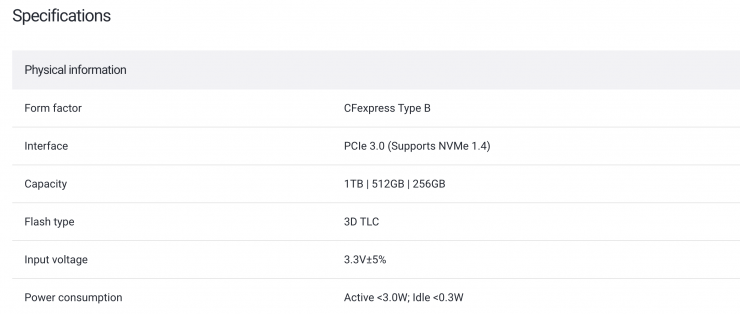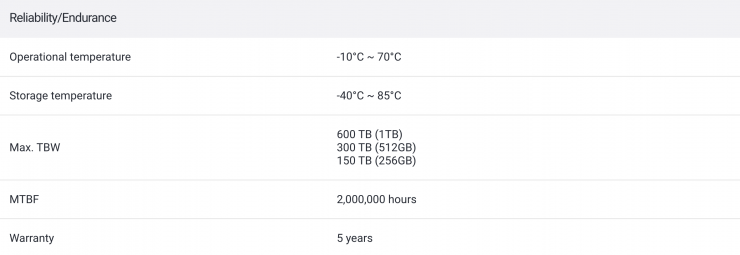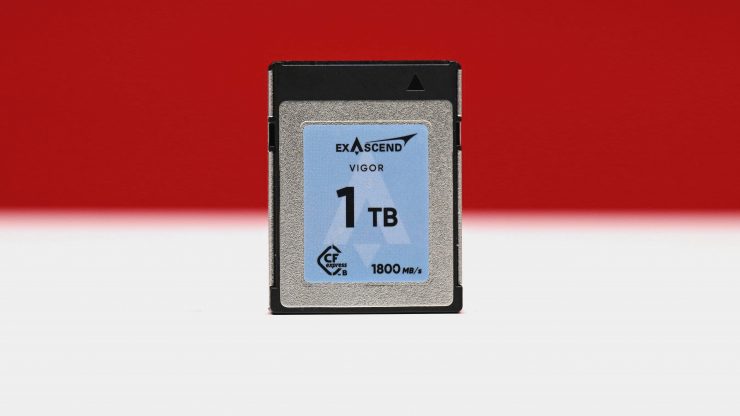
Exascend’s VIGOR 1TB CFexpress Type B memory card is the latest addition to the Taiwanese companies extensive portfolio. Exascend has forged a strong reputation in the industry over the last few years and their CFexpress Type B cards have become a popular choice for the RED V-RAPTOR and they also make proprietary media for Z CAM.
The Exascend VIGOR is being touted as a great solution for owners of cameras such as the Nikon Z9/Z8, and Canon R5/R5C. Exacend states that the new VIGOR cards have a low power draw, low heat which allows for extended 8K recording even in hot conditions.
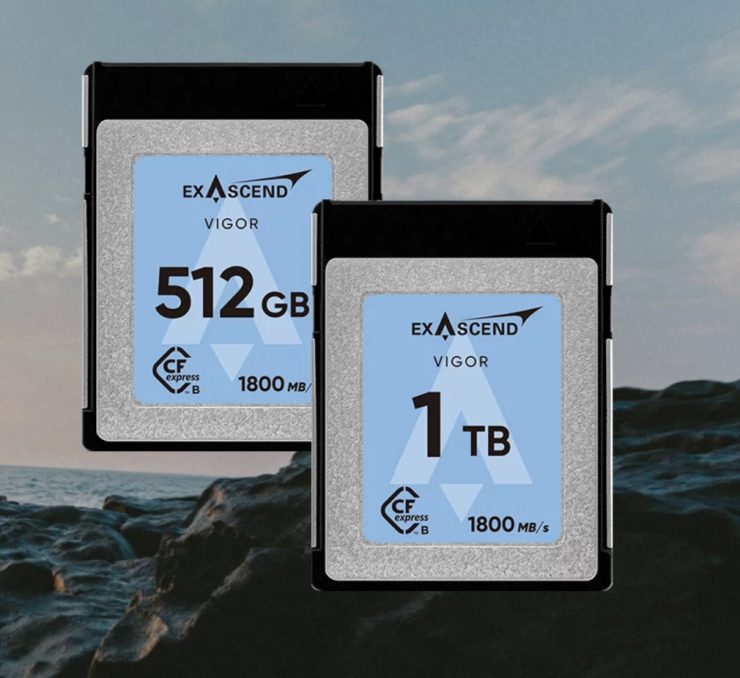
The Exascend VIGOR CFexpress card has claimed sustained write speeds of 1,700 MB/s and sustained read speeds of 1,850 MB/s.
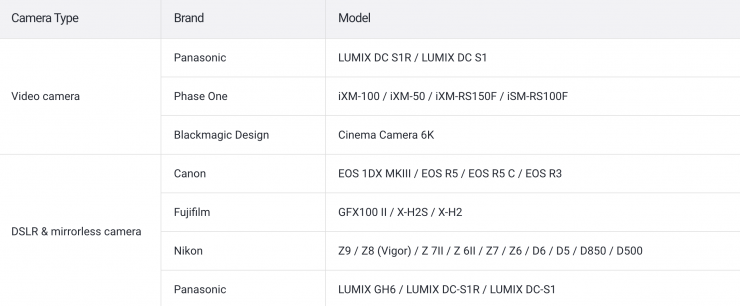
These sustained write speeds allow it to be easily used with quite a few cameras that are on the market. Above you can see what cameras have been tested and certified to use the VIGOR cards.
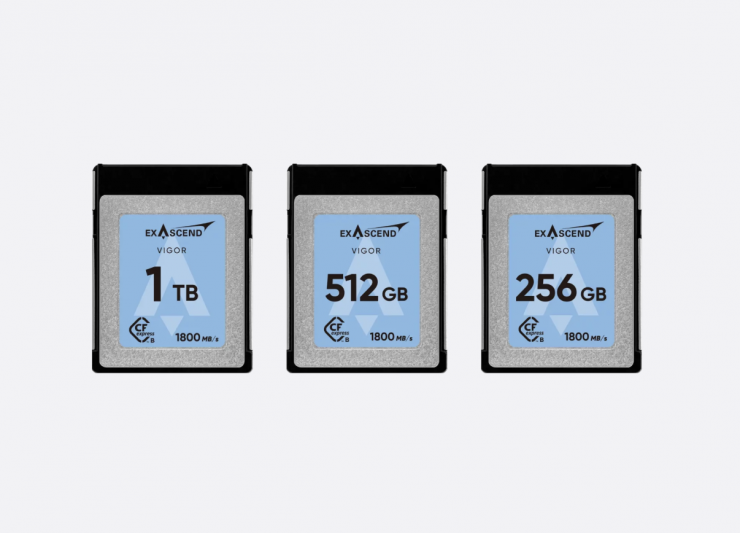
The cards are available in three capacities:
- 256GB
- 512GB
- 1TB
For this review, I will be testing out the 1TB version of the card.
Key features
- Sustained read speed of up to 1,850MB/s
- Sustained write speed of up to 1,700MB/s
- Environmental hardening (dust-proof & water-resistant)
- X-ray-safe
- Impact-resistant
- Magnetic-resistant
Keeping things cool
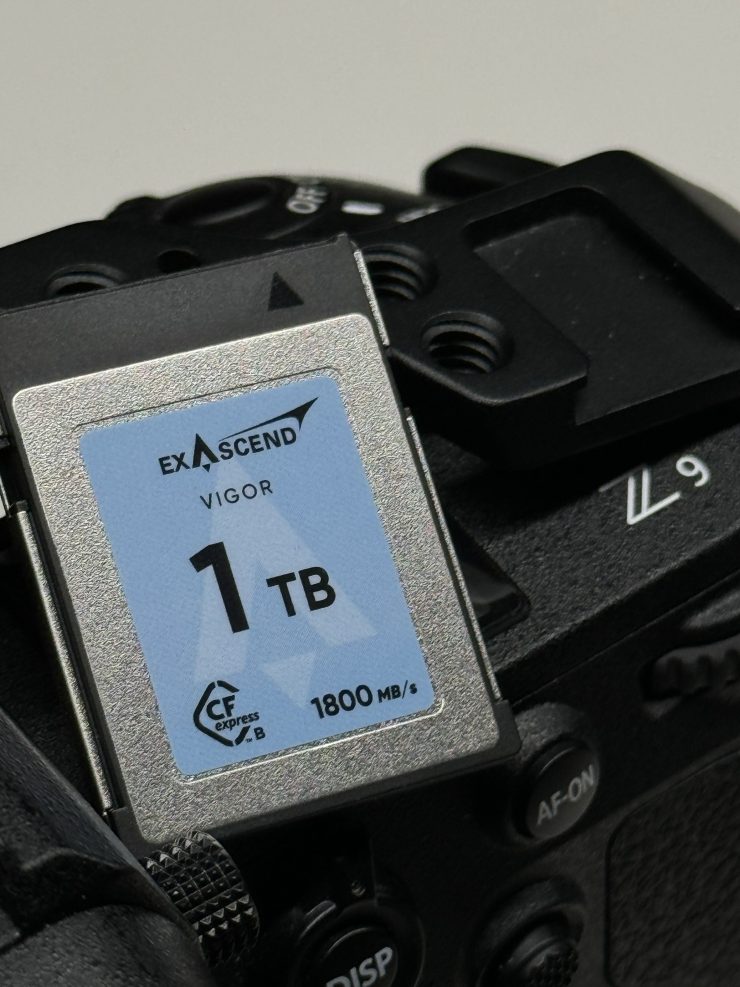
Exascend states that the VIGOR offers superior cooling efficiency with low power consumption, so you can say goodbye to overheating and frame drops.
The card is also IP67-certified and it features a next-generation-ready CFexpress controller and ultra-thin graphene heat spreaders. It also has shock resistance (MIL-STD-810G), electrostatic discharge (ESD) protection, an X-ray proof design, and protection against damage from magnetism.
The cards require an input voltage of 3.3V±5% and their power consumption is: Active <3.0W; Idle <0.3W. As a comparison the Angelbird AV PRO CFEXPRESS B SE also requires an input voltage of 3.3V±5%, however, its power consumption is Idle: 0.45W; Max: 2.40W.
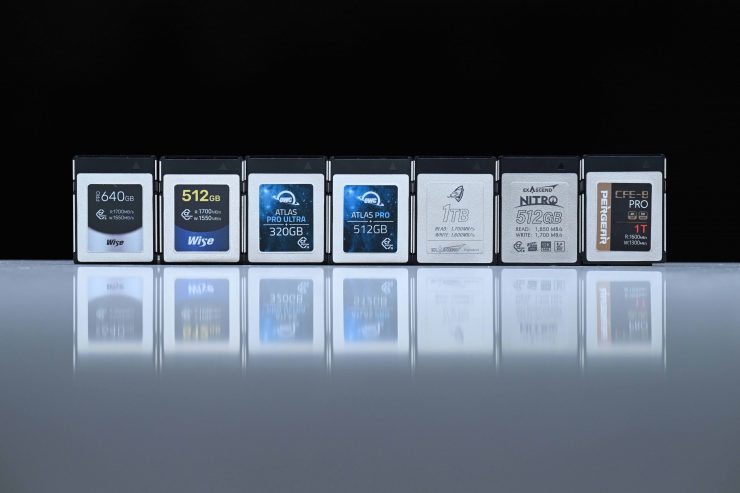
CFexpress cards have only been around for quite a few years now and higher capacity versions have certainly come down in price. This price drop has certainly been due to the fact that more and more cameras keep coming out that are recording to CFexpress Type B. With recent adaptation of the CFExpress Type B 4.0 standard, the cards are getting faster which bonds well for their longevity and use in future cameras.
What you clearly need to know with most types of media is that they aren’t all created equal. Different cards have varying degrees of performance and often card manufacturers won’t quote minimum sustained speeds, instead, they quote maximum possible read and write speeds. This can make choosing the right card confusing.
Fast Speeds
With the design of the PCIe Gen3 interface, the fastest cards can provide speeds of up to around 1850 MB/s read and 1800 MB/s write, which is over 3 times faster than the best CFast 2.0 and XQD cards. CFexpress Type B 4.0 cards that utilize PCIe Gen 4 double the data rate of PCIe Gen 3, allowing PCIe Gen 4 devices to transfer data at much faster speeds. CFexpress Type B 4.0 cards can reach speeds of well over 3,000 MB/s. The only trouble, is even the most data intensive camera that utilizes CFexpress Type B cards doesn’t require more than 850MB/s sustained speeds, so you could make a case that 4.0 isn’t actually required….yet.
As I mentioned earlier, according to Exascend, the VIGOR CFexpress has sustained 1,850 MB/s read and 1,700 MB/s write speeds. Again this allows it to easily handler anything you can throw at it.
So how do these speeds compare to some other 1TB cards on the market? Well, most cards CFexpress Type B 2.0 cards are going to have very similar claimed maximum read and write speeds.
What you clearly need to be aware of is that these listed speeds are largely irrelevant in the real world and you are not going to see maximum read or write speeds. The most important speed to try and find out is sustained read and write speeds which are generally a lot lower than maximum speeds. Unfortunately, some manufacturers don’t quote sustained speeds.
So what are the claimed minimum sustained write speeds of the cards? Well, below you can see the ones that I was able to find information about.
| MINIMUM SUSTAINED WRITE SPEED | |
| Exascend VIGOR 1TB | 1700MB/s |
| OWC 1TB Atlas Ultra CFexpress 4.0 Type B Memory Card | 1500MB/s |
| PERGEAR CFE-B Prime CFexpress Type-B Memory Card(1TB) – 2023 Upgrade Version | 1500MB/s |
| Angelbird AV PRO CFEXPRESS B SE | 800MB/s |
| Delkin Devices 1TB POWER CFexpress Type B Memory Card | 1490MB/s |
| Silicon Power 1TB CFexpress Type B Memory Card | 1500MB/s |
| Exascend 1TB CFE4 Series | 1400MB/s |
| Wise Advanced 1TB CFX-B Series Mark II CFexpress Type B Memory Card | 1300MB/s |
As you can see, the minimum sustained write speeds of the cards I have listed are all pretty closed theoretically they are all fast enough to handle any camera that utilizes CFexpress Type B media.
Other Features
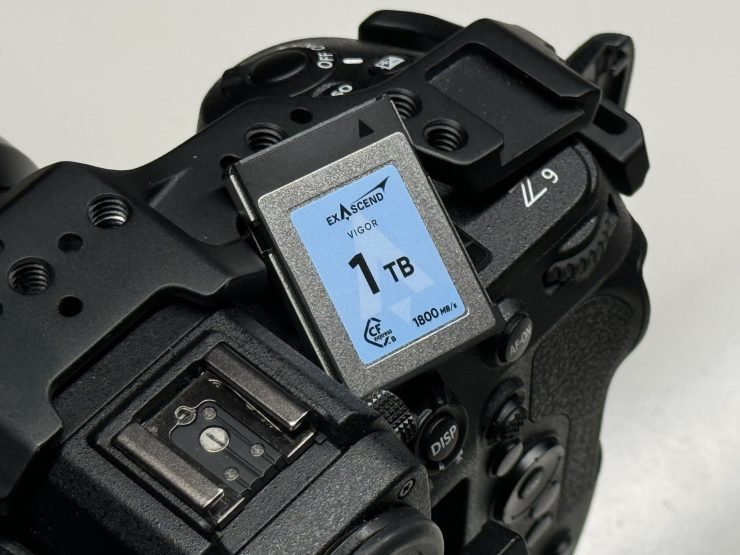
The Exascend card incorporates a lot of features such as:
Afterburner
Afterburner is a performance-enhancing Exascend technology that leverages SLC cache to boost sequential read and write speeds in storage devices with 3D TLC NAND.
Adaptive Thermal Control
Adaptive Thermal Control technology tackles the issue of overheating and thermal throttling that is unavoidable in high-performance PCIe NVMe flash storage devices.
Unlimited Over-Provisioning
Exascend offers unlimited over-provisioning (OP), allowing customers to set the ideal level of OP to match their application’s exact demands. No artificial limitations. Unlimited flexibility.
Power Tuning
The card allows for a unique level of control over hardware, firmware, and manufacturing. This allows the card to be tuned. By tuning the performance of the product specifically for particular applications, it is claimed that Exascend can achieve the highest possible performance to thermals and performance to power ratios.
SuperCruise
SuperCruise is a signature Exascend technology that optimizes write performance for stability. This is claimed to ensure unbeatable stable write performance even in the most demanding applications.
The card also supports AES-256, data retention, firmware encryption, RAID ECC, TCG Opal, multi-image firmware backup, and other Exascend technologies.
It is also equipped with a next-generation CFexpress flash storage controller, Exascend Nitro CFexpress is future-proof and user-upgradeable to the next generation of CFexpress.
Capacity
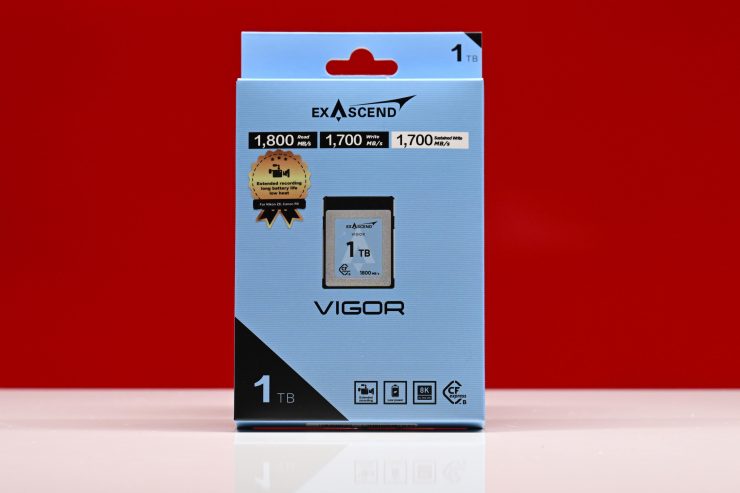
CFexpress cards can be found in capacities up to 4TB. 1TB and 2TB capacity cards tend to be the most popular, but with more cameras coming to market that are recording in higher resolutions and higher bitrates, the need for larger capacity cards will only increase.
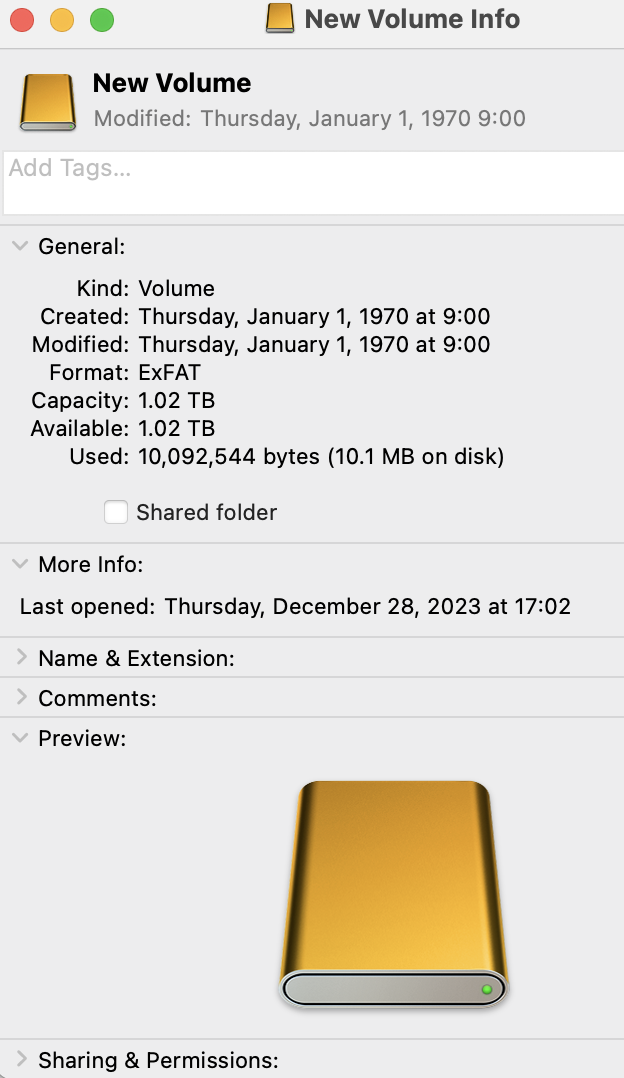
So when I mounted the Exascend VIGOR 1TB CFexpress card it shows the actual capacity as being 1.02 TB. Given the RED Mini Mag controversy, it is good to know that you are getting what is being advertised. However, with some memory cards and media, companies reserve more space for buffer cleaning purposes which offers more stable writing performance.
Record 8K RAW
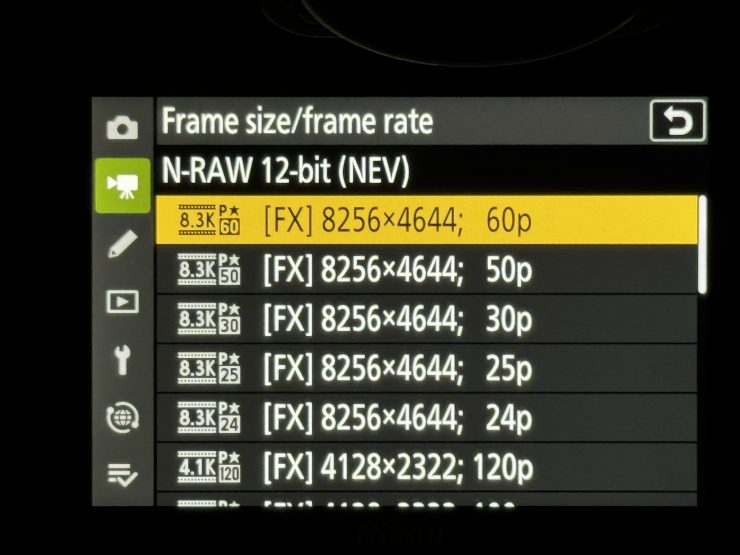
Cameras with dual-lane PCIe 3.0 interfaces, can certainly take advantage of the high write speeds CFexpress offers. From what I understand, the Canon C500 Mark II, Canon C300 Mark III, Canon R5, Canon R5C, Canon R3, Panasonic GH6, and the Nikon Z9 all use a dual-lane PCIe 3.0 interface. I am also assuming that is the case with the RED V-Raptor. I am not currently aware of any camera that can take advantage of faster CFexpress Type B 4.0 cards.
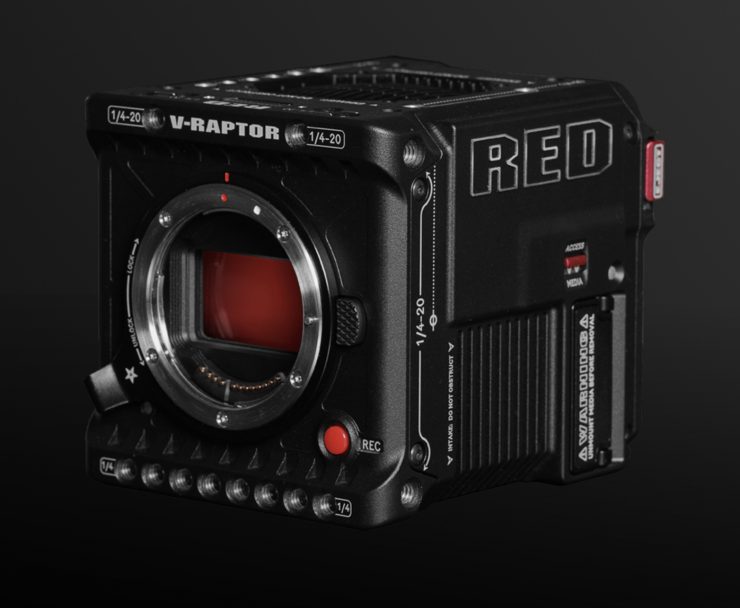
The maximum data rates when recording on the RED V-Raptor can reach up to 800MB/s so you need a card that is capable of sustaining those speeds. This is why certain cameras require certified media to be used because sometimes the data rates that are required can’t be met by just any card.
In contrast, the Canon R5 and R5 C only needs a card that is capable of sustaining 400MB/s to record 8K RAW. This means you don’t necessarily need to buy a high-performance CFexpress Type B card if you are just using this camera.

Above you can see the card requirement speeds listed by Canon for recording 8K on the R5. The speeds offered by CFexpress Type B cards far exceed the requirements of most cameras that use this type of media.
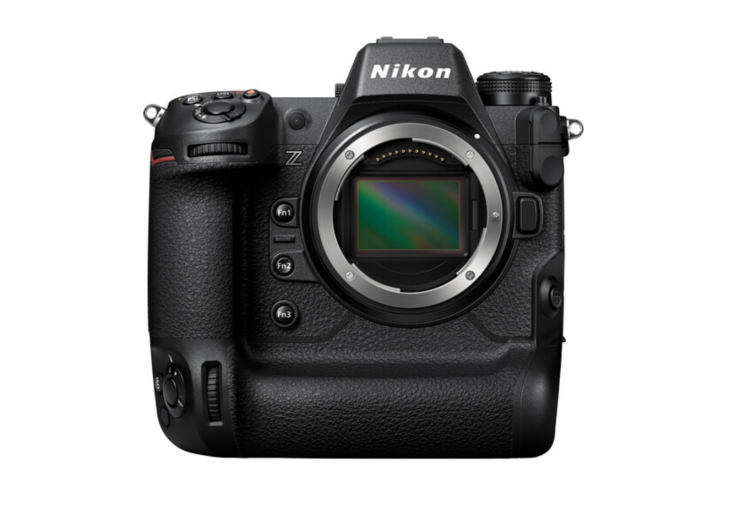
The card should also have no problems recording 8K RAW from the Nikon Z9. The data rate for recording 8K 60p in N-RAW (High-quality setting) is 850MB/s. I will test this further down in the review.
In cameras such as the Nikon Z6/ Z6 II and Z7/ Z7 II that only feature a single lane PCIe 2.0 interface, the camera can only read and write to CFexpress cards at throttled down speeds that are similar to what you would already get with an XQD card. As these cameras don’t even use the full write speed capabilities of XQD cards, CFexpress won’t offer any increased in-camera performance.
Fast Media Offload
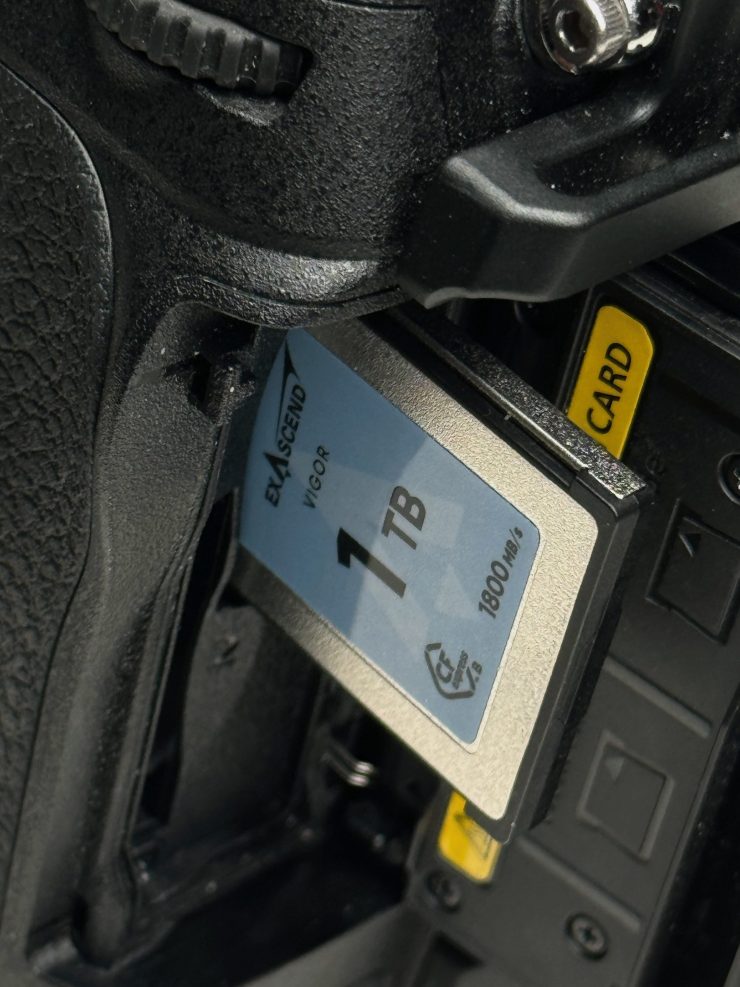
What you clearly need to remember, and this goes for any type of media, is that transfer speeds will vary depending on both the read and write speeds of your card, your card reader, what type of hard drive you are transferring to, and the specifications of your computer.
If you are using a CFexpress card and transferring to an HDD drive, you won’t be getting fast transfer speeds. If you are transferring to a very fast SSD then you will see lightning-fast offload speeds as long as your computer utilizes USB3.1 Gen 3 or Thunderbolt 3/4.
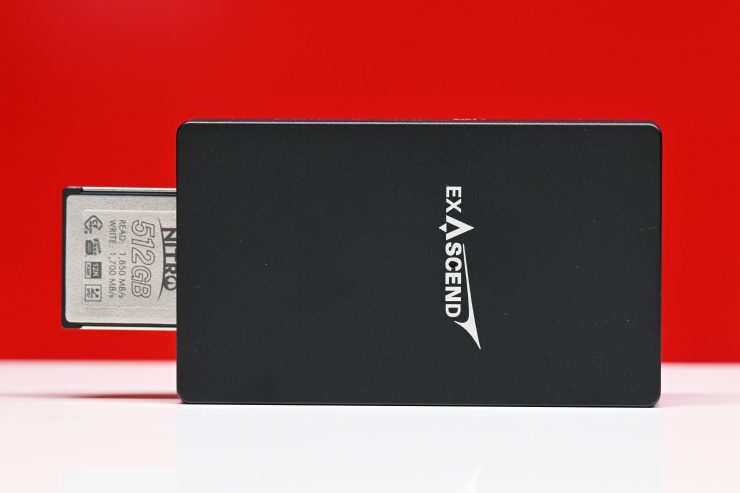
Exascend has a 20 Gbps CFexpress reader to enable fast offloading of footage. The high-speed CFexpress reader also allows users to upgrade select Exascend CFexpress cards to unlock even higher performance such as the new CFexpress 4.0 standard that was announced last year.
Real World speed tests
I did a few tests to see what the sustained read/write speeds of the Exascend VIGOR 1TB CFexpress card were.
For the sustained read/write speeds I was using the OWC Atlas FXR Thunderbolt CFexpress Type B Card Reader and a 14″ MacBook Pro with Thunderbolt/USB4. The card reader can utilize a 40 Gb/s Thunderbolt 3 interface.
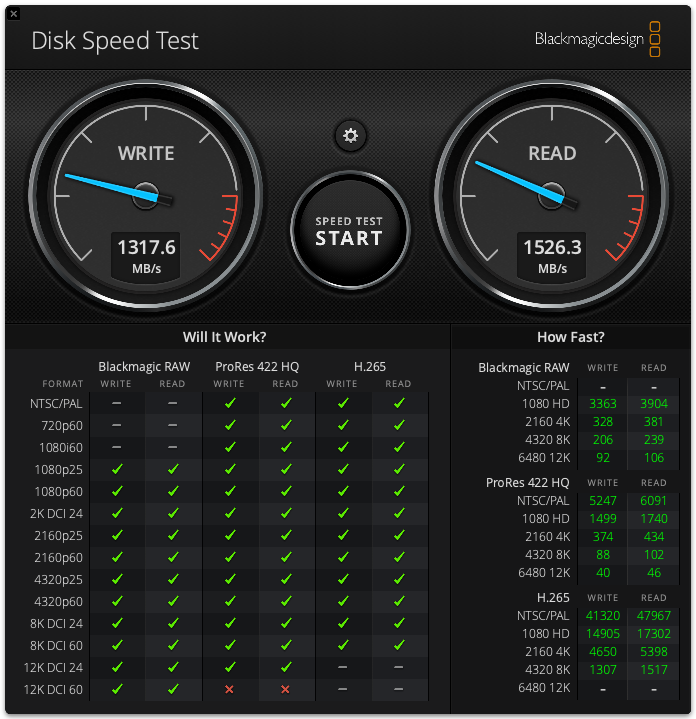
Above you can see the results for the Exascend VIGOR 1TB card with the stress set to 5GB. According to Blackmagic Design, you should select the ‘5 GB’ option for the most technically accurate test which averages out any fluctuations in disk performance. Choosing the highest stress test value ensures that Disk Speed Test will not report artificially fast results due to the disk cache on conventional hard drives. Once the disk cache has been flooded with data, the real speed of the disks will be seen which will be slower than the disk cache speed.
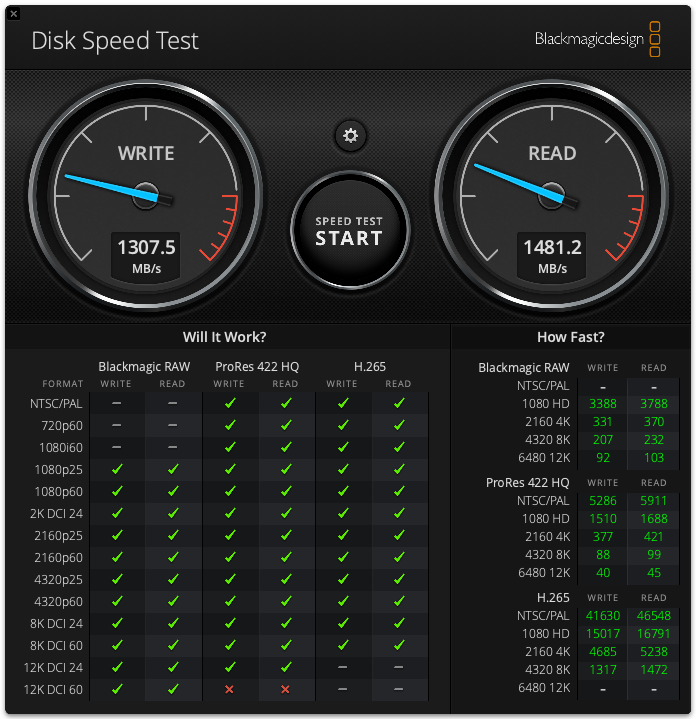
As a comparison, above you can see the exact same test using the OWC Atlas Ultra 1TB CFexpress Type B 4.0 card. Please be aware that because I don’t have access to a Thunderbolt 4 card reader, the card reader I am using is limited to transfer speeds of up to 1600MB/s.
I also tested the Exascend VIGOR 1TB card using the AJA System Test Lite software under a 16GB load to see what the read and write speeds were. There were some drops during the write speeds.
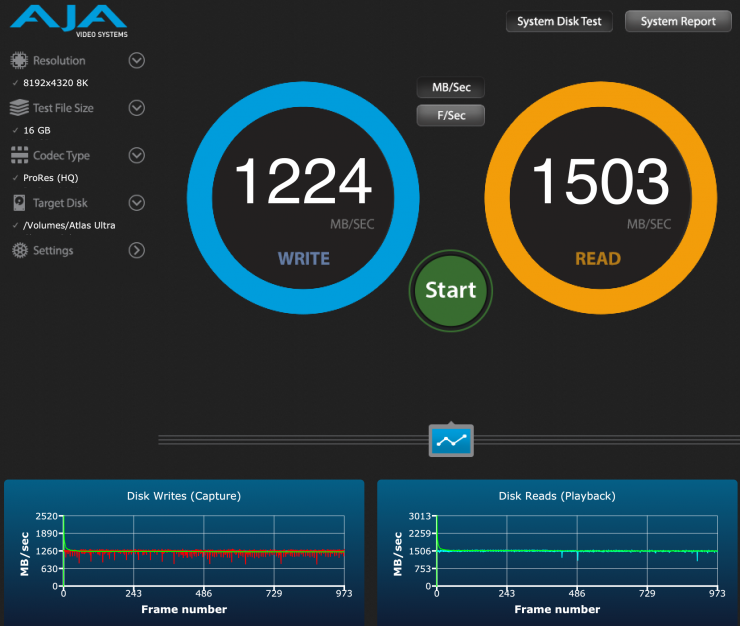
As a comparison, above you can see the same test using the OWC Atlas Ultra 1TB CFexpress Type B 4.0 card. The OWC has very consistent read and write speeds.
Frame/sec
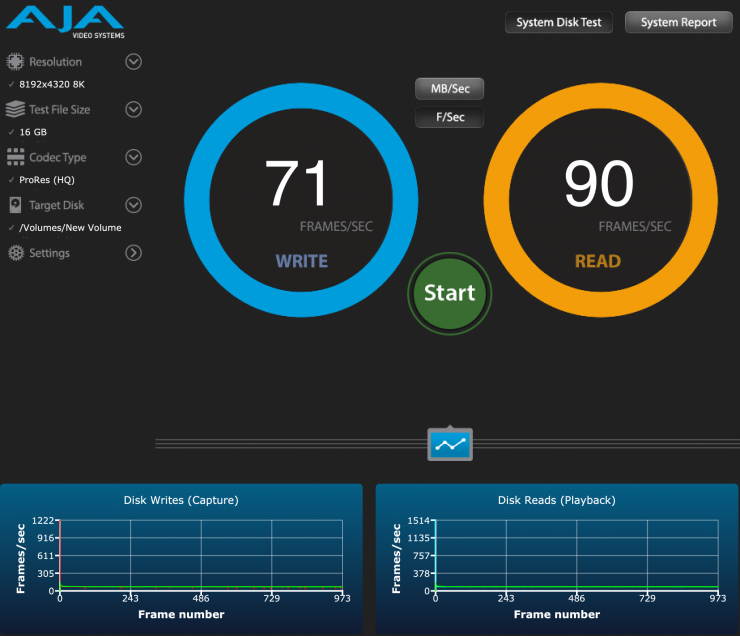
I also did another test to see how many frames per second the Exascend card could handle recording 8K ProRes 422HQ. As you can see it could sustain recording 71fps in 8K ProRes 422HQ.
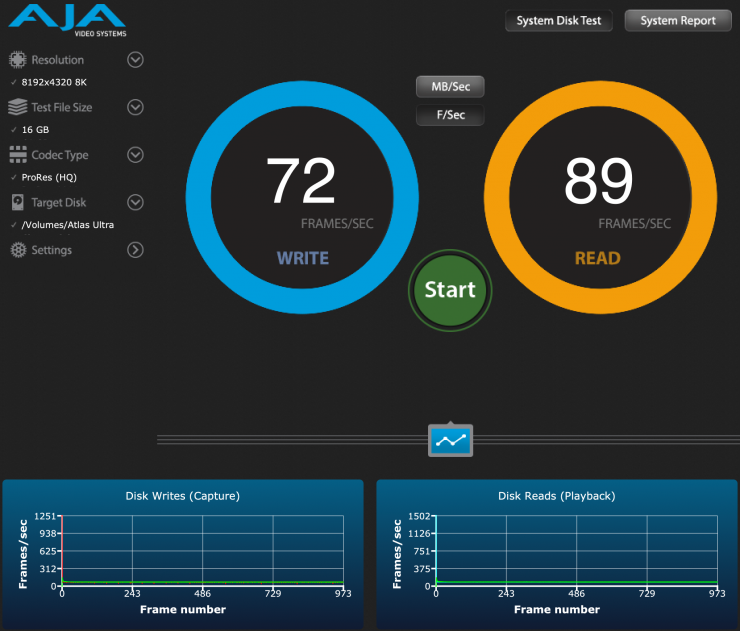
As a comparison, above you can see the same test using the OWC Atlas Ultra 1TB CFexpress Type B 4.0 card. .
What you clearly need to remember, and I am going to reiterate this over and over, is that the CFexpress Type-B card readers can be a stumbling block when it comes to speed. There are currently only a very small number of Thunderbolt 3 CFexpress card readers available. The majority of readers are only USB3. The good news is that there are Thunderbolt 4 readers coming early next year.
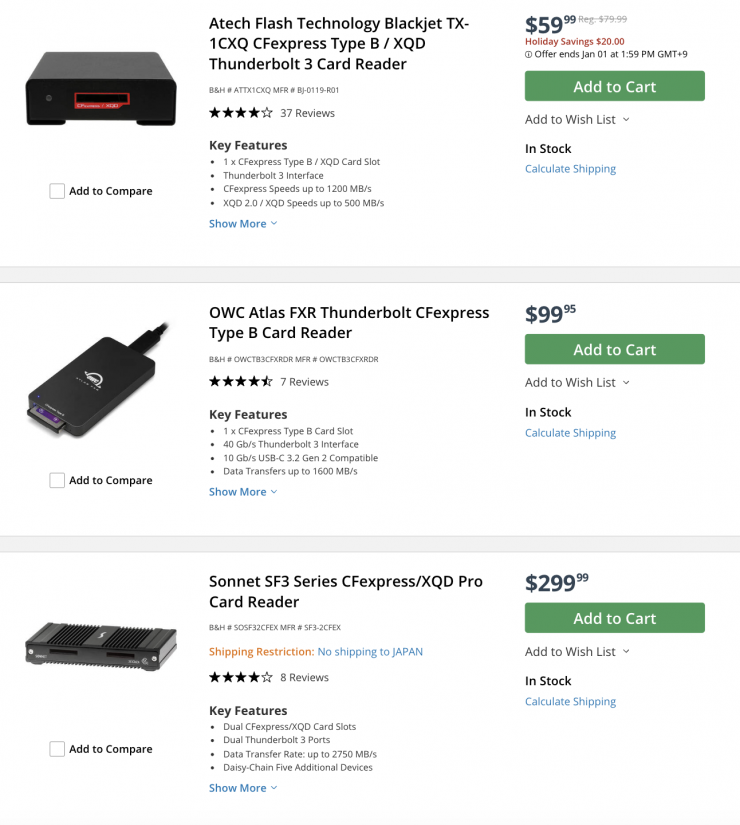
Above are the only card readers I am aware of that use Thunderbolt 3.
- Atech Flash Technology Blackjet TX-1CXQ CFexpress Type B / XQD Thunderbolt 3 Card Reader $149.97 USD
- Sonnet SF3 Series CFexpress/XQD Pro Card Reader $199.99 USD
Real World Testing
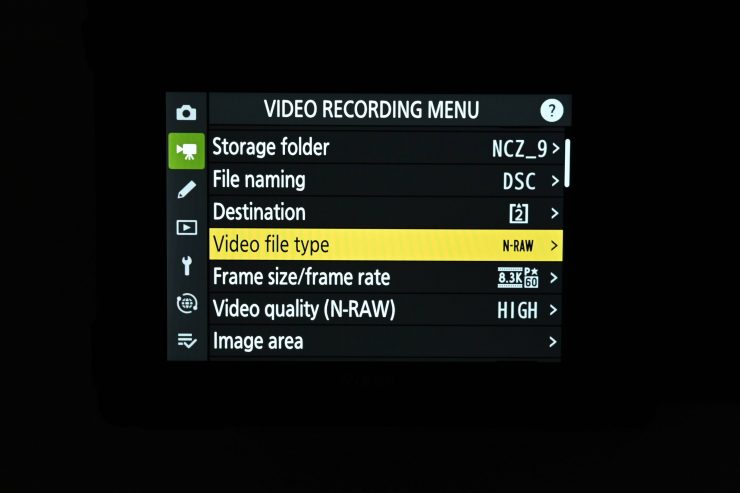
I tested the Exascend VIGOR 1TBB card out with the Nikon Z9 and set the camera to record 8K 60p N-RAW. The Z9 when recording 8K 60p in N-RAW (High Quality setting) requires a card with a sustained data rate of up to 850 MB/s.
I was able to record 8K 60p N-RAW in the High quality setting without encountering any problems. This didn’t come as any big surprise as the performance of the card exceeds the requirements for recording 8K 60p N-RAW.
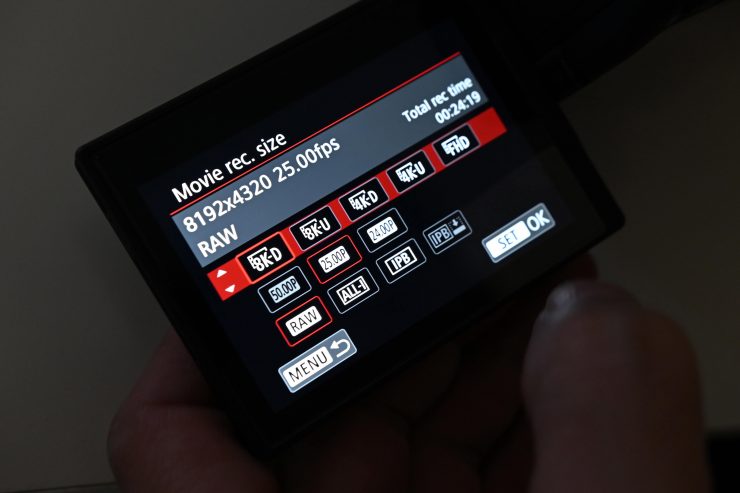
I also tested the card out with the Canon R5 and set the camera to record 8K RAW. The card worked without any issues and I was able to record 8K RAW without encountering any problems.
Price & availability
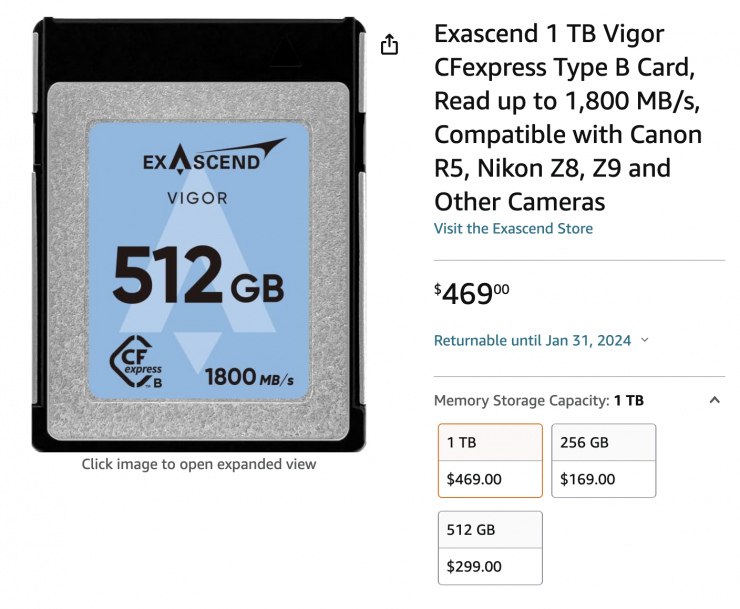
The Exascend VIGOR 1TB card retails for $469 USD. The 512GB version of the card costs $299 USD. The price for the 1TB , but depending on what camera you are using and what resolution, frame rate, and recording format you need to capture, it pays to buy the correct media.
If you are working on high-end productions you want to use the best available and reliable media possible. Yes, no media is full proof and cards can fail regardless of their price and certification, but it is always good to know that a camera manufacturer has done a lot of the hard work for you. There is a reason why certain cards are approved by camera manufacturers are others are not.
How does the price compare to the competition?
So how do these speeds compare to some other 1TB cards on the market?
| PRICE | |
| Exascend VIGOR 1TB | $469 USD |
| OWC 1TB Atlas Ultra CFexpress 4.0 Type B Memory Card | $579.99 USD |
| PERGEAR CFE-B Prime CFexpress Type-B Memory Card(1TB) – 2023 Upgrade Version | $399 USD |
| Angelbird AV PRO CFEXPRESS B SE | $299.99 USD |
| Delkin Devices 1TB POWER CFexpress Type B Memory Card | $339.99 USD |
| Silicon Power 1TB CFexpress Type B Memory Card | $230.98 USD |
| Exascend 1TB CFE4 Series | $469 USD |
| Sabrent 1TB Rocket CFX CFexpress Type B Memory Card | $399.99 USD |
| Wise Advanced 1TB CFX-B Series Mark II CFexpress Type B Memory Card | $399.99 USD |
As you can see, the Exascend VIGOR 1TB card is one of the more expensive cards on the market, however, it offers great performance and comes with a 5-year warranty as well as a data recovery service.
The card is also claimed to feature built-in protection in the event of a power failure when you are recording.
Conclusion
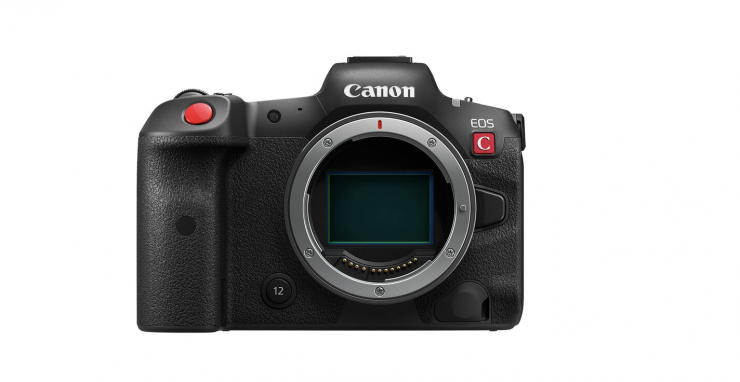
If you own a Nikon Z9, Canon R5, R5 C, etc. and plan on recording 8K RAW then this is definitely a card worth considering. It offers outstanding performance and it is capable of recording anything that you can throw at it.
The card will also work well in the Nikon Z8, Panasonic GH6, Blackmagic Pocket Cinema Camera 6K, etc.
The card performed very well in my tests and the sustained read and write performance is very impressive. With some cards, you really do pay for what you get.
As I mentioned earlier, the Exascend VIGOR CFexpress comes with a five-year global warranty that covers any issue with the card and its components. For accidents and damage that render customers’ footage inaccessible, Exascend offers a factory data recovery service that can retrieve data from even severely damaged cards.

